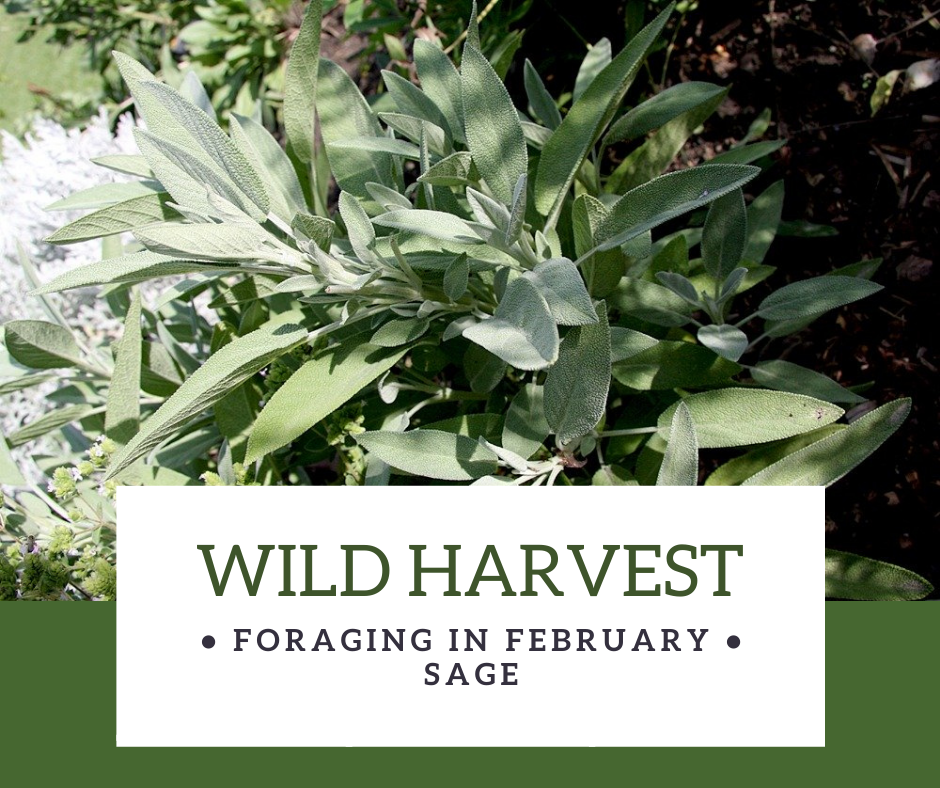
Sage is an evergreen and the leaves can be picked at any time of year. The young leaves are tastier in summer but sage is a good all year round salad herb.You can pick whole young shoots or individual leaves.
Sage is native to the Mediterranean so can’t readily be found growing wild to forage in Scotland, but it will overwinter here, so is well worth planting in order to have some winter greens to forage in the garden.
Salvia officinalis is a member of the mint family Lamiaceae. Salvia is the largest genus in the mint family with nearly a thousand species of shrubs, herbaceous perennials and annuals. Rosemary (Salvia rosmarinus) also belongs to this genus.
Sage has many different cultivars which vary in size, leaf shape, flower colour and foliage pattern. The Old World types grow to about 60 cm tall and wide. The flowers vary from white to pink or purple. Sage flowers in late spring or early summer, with the flowers attractive bees and other pollinators. The gey-green leaves are oblong, wrinkled on top with many short hairs underneath. Modern cultivars include leaves with purple, rose, cream and yellow colours, so they are attractive as well as delicious plants for the garden.
- Varigated leaf sage has variegated leaves and lilac blue flowers and a good flavour.
- Purple sage has a good flavour and beautiful purple leaves
- Common sage is the original sage, used to make stuffing and flavour meat dishes.
Sage was known as a ‘holy herb’, as it was employed in religious rituals.
The word salvia comes from the Latin verb ‘salvere’ (to feel healthy, to heal) and sage was widely used by the ancient Greeks and Romans. Sage has been used to promote oral health, as a cure against sore throats, menopausal pains and in fighting off gastroenteritis and other infections. It is also thought to improve appetite and digestion.
Sage is full of nutrients and trace elements like iron, manganese, copper and zinc, as well as several vitamins such as A, C, E, K and B6.
While sage has a strong flavour, so you probably wont want to eat it by the bowlful, it is a great herb to have in the garden for it’s all year round availability.
If you are going to forage, please follow the simple guidelines:
- Always be sure you are sure of the plant before you pick it and never eat any plant you are unsure of.
- Leave plenty behind for wildlife.
- Make sure you have permission to pick
- Only pick where plants are plentiful
The text for this post has been taken from “Individual & Ecological Health January 2022”, by Diana Otto. Diana works tirelessly to get councils to ban damaging pesticides. If you would like to know more you can email Diana directly at diana.otto@gmail.com.

